While Sailor Moon definitely had its fair share of character stereotypes, I think that was actually one of the points where the series truly shined. Rather than just sticking with common tropes, it built upon them to make each of the characters into people that stood out on their own merits and that the readers/viewers could really relate to.
One such character, for me at least, is Rei — and especially the Rei that we see depicted in the anime. Though a haughty, strong-headed, and competitive 14 year old girl in her day-to-day life, she somehow manages to make this work with her spiritual side without ever feeling like either depiction of the character is shoehorned in.
Today, I’d like to take a moment to explore a little more of Rei’s spiritual side, and specifically about what some of her chants actually mean. If you happen to be an evil demon, you may want to skip this article. For the rest of you, read on!
You could probably make a pretty good argument that Rei’s spiritual side makes a lot more sense in the manga, where she’s depicted as a cool, calm, and collected character. You could then probably push that argument further and say that Rei’s duality can come off as forced in the anime due how they rewrote her character.
And you’d be entirely right.
However, while the manga certainly set the stage for Rei’s life as a Shinto priestess at the Hikawa shrine, Ms. Takeuchi doesn’t really go too far beyond that. Most of what we see of Rei’s shrine life actually comes from the anime. That doesn’t make either depiction better than the other, of course, but it is worth keeping in mind when discussing the merits of the various Rei’s in Sailor Moon!
Now that we’ve got all that out of the way, I suppose we should finally get to our subject at hand: Rei’s chanting!
Though by no means a prerequisite for Rei to throw an ofuda at her foes, the chanting typically comes into play Sailor Mars is using her demon-banishing charms as an attack. In fact, I can’t recall any scenes where she recites this mantra outside of her Sailor Soldier form,1 though the opposite is true, and there are a few cases where Sailor Mars deviates from the standard chant.
And what is that standard chant, you ask?
Rin (臨), Pyō (兵), Tō (闘), Sha (者), Kai (皆), Jin (陣), Retsu (列), Zai (在), Zen (前)
Known is 九字[切り] (kuji[-kiri]; nine symbolic cuts),2 these are a variety of mantras that consist of nine syllables. Interestingly enough, the practice of reciting these nine-syllable mantras actually originated in Taoism, though it later gained a foothold in Shugendo,3 a Japanese ascetic religion that blends both Shinto and Buddhist traditions. This is not the first, nor last, time that Rei was religiously confused. Poor girl!
There are also mudra (hand postures, or ritual gestures)4 to accompany each of the nine “cuts” made while chanting the mantra. The meanings of each of the mudra have no correlation to the Japanese words chanted in the mantra, or at least scholars haven’t been able to find any connection at this time.
Speaking of meanings, the meanings of the various characters contained within the kuji mantra differ not only between Shinto and Buddhist interpretations, but even among various different Buddhist interpretations. For the sake of our sanity — and because Rei is (technically) Shinto — we’ll be going with the former.
In Shinto, the characters have the following meanings:5
- Rin: To face
- Pyō: The soldier
- Tō: To fight
- Sha: The man (or the people); a foe
- Kai: The all, or the whole effect, or whole effort
- Jin: In Formation, or position in camp or to prepare
- Retsu: To move in column or a row, in a line; or marching, or to focus
- Zai: To appear, or to exist to make yourself known, or create existence
- Zen: To be in front, or show up in front
What this essentially means is that the forces of the universe (all people) are united together in the fight against evil. The act of performing the mantra is meant to bring good luck to the practitioner, and it also used in purification rituals.
Fortunately for us desperately in need of purification, (most?) Shinto rituals tend to prefer using water to purify people rather than burning the afflicted person alive, which is Rei’s method of choice.
As an interesting bit of trivia, Michie Tomizawa,6 Rei’s voice actress in the 90’s anime, mispronounced the sixth character (陣; jin) as chin during the first half of the first season. While some astute fans (correctly) point out that chin is also a valid reading,7 she and the anime producers likely also viewed this as a mistake, considering that her pronunciation of the character changed to jin later in the series.
I hope you found this as interesting as I did and, just maybe, are inspired to learn a bit more about Shinto and Japanese traditions! As silly as it may sound to admit, Sailor Moon is nearly entirely responsible for inspiring me to pursue a degree in Japanese history, and I love being able to find little things in the series that tie back to the culture. Has the series ever inspired you in such a way? I’d love to hear other people’s stories!
References:
- Feel free to correct me if I’m wrong! Admittedly, I didn’t confirm every single episode ↩
- See Kuji-in (Wikipedia) ↩
- See Shugendo (Wikipedia) ↩
- See Mudra (Wikipedia) ↩
- See Kuji-in (Meanings in Shinto) (Wikipedia) ↩
- See Michie Tomizawa (Wikipedia) ↩
- Technically speaking, the kanji 陣 should be read as ぢん and not じん, which is where we also get the possible voiceless reading of ちん. However, since the readings and kana use were standardized after World War II, we now use じん instead. If none of this made sense to you, please don’t worry — it’s all just Japanese linguistics talk here, and I really don’t want to annotate a foot note with more footnotes. ↩
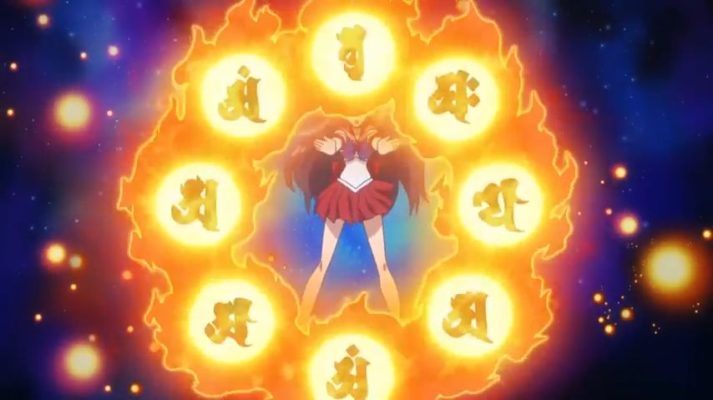
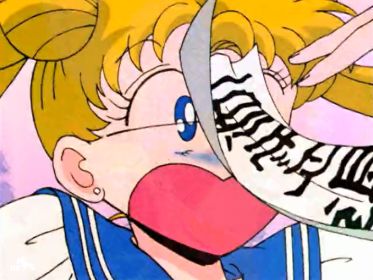
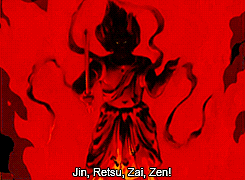
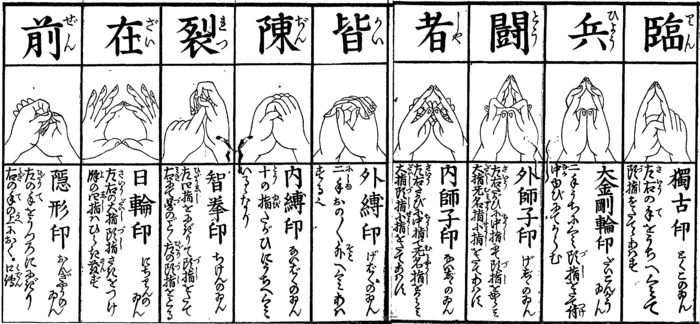
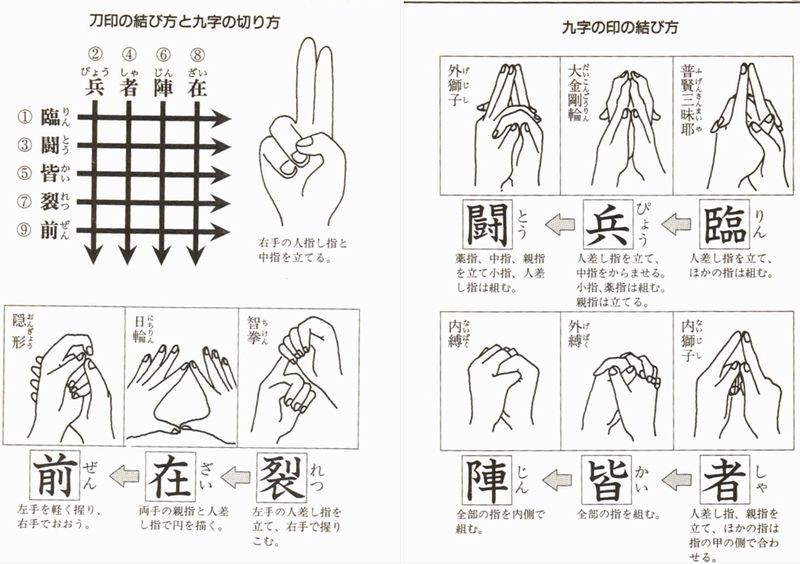
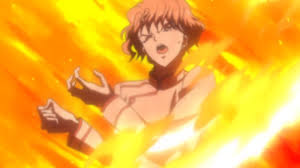

Rei uses the mantra in episode 48 before regaining her memories of being Sailor Mars, complete with modified animation and all. 🙂 Maybe there were other scenes somewhere, but that’s the one I remembered right away.
Wow, good catch!
I suspect that she may have used it on a few occasions when meditating in front of the fire, or something like that. But without checking every scene, it’s hard to say.
Yyyep, she actually does use it while meditating! In fact, it turns out she does this as early as her introduction episode (#10) :D, so it’s possible there’s more of this later on. This is before she even awakens as Sailor Mars, too.
Speaking of Rei’s mantras, I’ve been curious about her *other* ones. One is about halfway into ep.49 (fire reading session determining the enemy’s identity). Another one is part of her Fire Soul Bird attack sequence (ep.54), which I *think* might be linked to Acala / Fudo Myo-o since he’s in that animation again. Kind of difficult to figure out what she’s saying there since it’s supposedly Sanskrit filtered through the Japanese phonetics.
Hmm, I’m going to have to look into that!
I love it when she does the mudra too!! It’s not in her recycled ofuda throwing sequence (part of which you have here as a gif) so it always feels extra special~.
I wanted to provide a full gif or clip, but couldn’t find anything online. T_T
>Fortunately for us desperately in need of purification, (most?) Shinto rituals tend to prefer using water to purify people rather than burning the afflicted person alive, which is Rei’s method of choice.
Can’t do that, Mercury would be angry.
True, can’t steal Mercury’s shtick!
> > You could then probably push that argument further and say that Rei’s duality can come off as forced in the anime due how they rewrote her character.
I don’t feel that way at all. Someone can take their religion and their duties at home seriously, and still let loose and have an outgoing personality around their friends. Rei seems to have been a bit more of a serious and solitary person before meeting Usagi and the others, and she still is serious around other characters and when people are in danger.
But she and Usagi have a unique relationship where they feel free to express every mild annoyance with each other in the form of playful arguments. They’re never seriously angry with each other… they’re close enough to each other where they can insult each other and know that none of what’s being said is actually meant literally. Some fans seem to not understand this and think that Rei actually dislikes Usagi at times…
Thanks for pointing out that bit of trivia where Rei’s voice actress mispronounced one of the words. I don’t know how you find all of these things! I’ve watched the episodes so many times and never would have noticed that myself.
On the fun side: In some parts of the German anime show Rei just counts from 1 to 9.
That… is both totally lame, and hilarious at the same time.
Well, considering that nearly all attacks are basically just a variation of “xyz fly” (Neptune fly, soap bubbles fly, fireball fly, moon tiara fly…), it’s actually quite imaginative. And you may be pleased to know that they changed it in later seasons though nobody understood what she actually wanted to say.
The most imaginative thing was probably to translate “Moon Prism Power, make up!” as “Macht der Mondnebel, mach auf!” Literally, power of the moon mist (fog, nebula), make up!” I didn’t mind the mist part that much, I felt just confused by the “mach auf” part. “Mach auf” without any other explanation means “open up”. Then one day I realized it’s the direct translation of make up. There is a word Aufmachung (dressing up) in German but you don’t usually use its verb in that sense.
“As silly as it may sound to admit, Sailor Moon is nearly entirely responsible for inspiring me to pursue a degree in Japanese history, ”
Now that you asked: In a way it’s totally SM’s fault that I ended up in Japan. *cough*
O.k., possibly not fault but the trigger.
I love languages and wanted to learn one language totally different from what you have in Europe. And when I looked up missing parts I couldn’t watch, I ended up on the compulsory “SM Japanese corner”. I thought it interesting to see a totally different structure in a language. Na-adjectives, which sit somewhere between nouns and adjectives and are not clearly either, fascinated me. So one day I wondered whether I could memorize katakana. Encouraged by a Japanese friend I memorized hiragana, too. And I learnt my first kanjis like 水星 or 海王. I went to a language course in Japan, and half a year later I entered a language school. And my time here become longer and longer.
No, I never consciously emigrated to Japan. I just went there and before I knew any better ended up here married with a most amicable family. Including my beloved in-laws.
God Rei’s ofuda is so cool.
The first thing of Sailor Moon I EVER saw was the Toonami commercial that opens with Rei doing the kuji kiri, and I’ve been obsessed with her ever since that moment. Twelve year old me spent HOURS rewinding a VHS of that commercial and practicing the hand gestures (which in the dub were “sun, moon, star, earth, fire, air, water, rock.” I guess eight was enough for Cwi). And here I find that they have a whole name and a meaning. All these years later, I still know how to do them! Thank you for all of your wonderful insightful articles ❤️